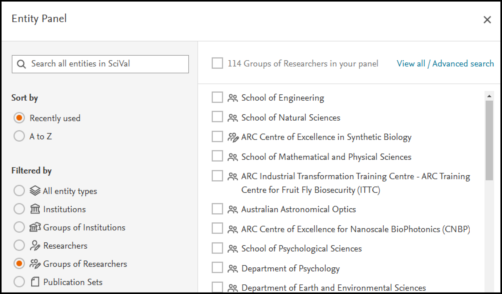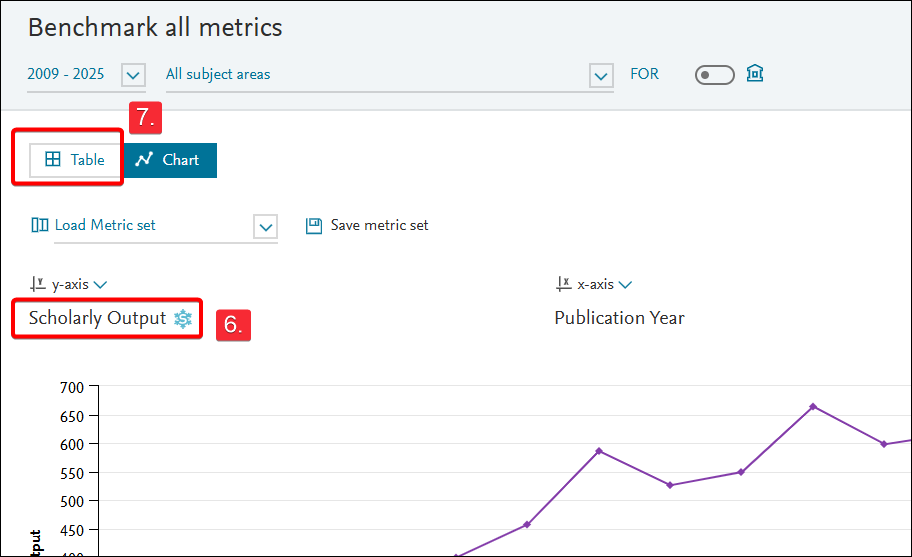
Some metrics are designed to benchmark across disciplines, like Field Weighted/ Category Normalized Citation Impact, SNIP and SJR. Other metrics should be only used to benchmark within the same discipline areas, like h-index, citation counts, publications in top citation percentiles, Journal Impact Factor, etc.
We suggest using multiple metrics to compare results:
See the information below on how to do benchmarking in SciVal and InCites:
Instructions:
1. Go to SciVal.
2. Go to Compare and select Benchmark -> All Metrics
3. Set the year range.
4. Search for entities to benchmark or click Select Entities to view a list.

5. Select Entities to benchmark. These could be researchers, universities, regions etc. Groups of Researchers are Macquarie Schools, Departments and Centres.

6. Change the selected metric if desired.
7. To view multiple metrics at a time, select Table.

8. Click Add Metric, or manage multiple metrics.
9. You can Export to a Spreadsheet, or Add to Reporting to save for later.
10. You can also filter the data by subject area. e.g. if most of your publications are in quantum physics journals and you want to benchmark against Australian researchers in this area, add yourself and the region Australia, then filter to the subject area 5108 Quantum Physics.

If you want to benchmark against a more specific field, or against researchers in other institutions, contact your Faculty Librarian for help.
Instructions
1. Log into Incites. Note: You will need to register with your Macquarie email address the first time you use it.
2. Select the Analyze module.
3. When you get to the below page, change the Entity Type to Researchers and click Start.

4. Search for your profile and select it.
5. Set the year range.
6. Change or add more metrics.

To benchmark yourself against all researchers in a particular subject area
7. Go to Baselines
8. Add a Global Baseline, AND/OR
9. Add a Country/Region Baseline. To make the country/region baseline option available:
9a. Tick the box next to your name.
9b. Select Pin to Top from the popup at the bottom of the screen.
9c. Add the country/region baseline, which should now be available.

10. Go to Filters.
11. Select Research Area
12. Search for and select your research area
13. Select Update Results.
 |
 |
This filters your publications, as well as the baselines, to papers within the chosen research area.
14. From here you can download your results to Excel.
15. If you want to benchmark against institutions or departments, change the input and run another analysis, then Download this and compare it to your data from the Researchers input.

For help with benchmarking, contact your Faculty Librarian.